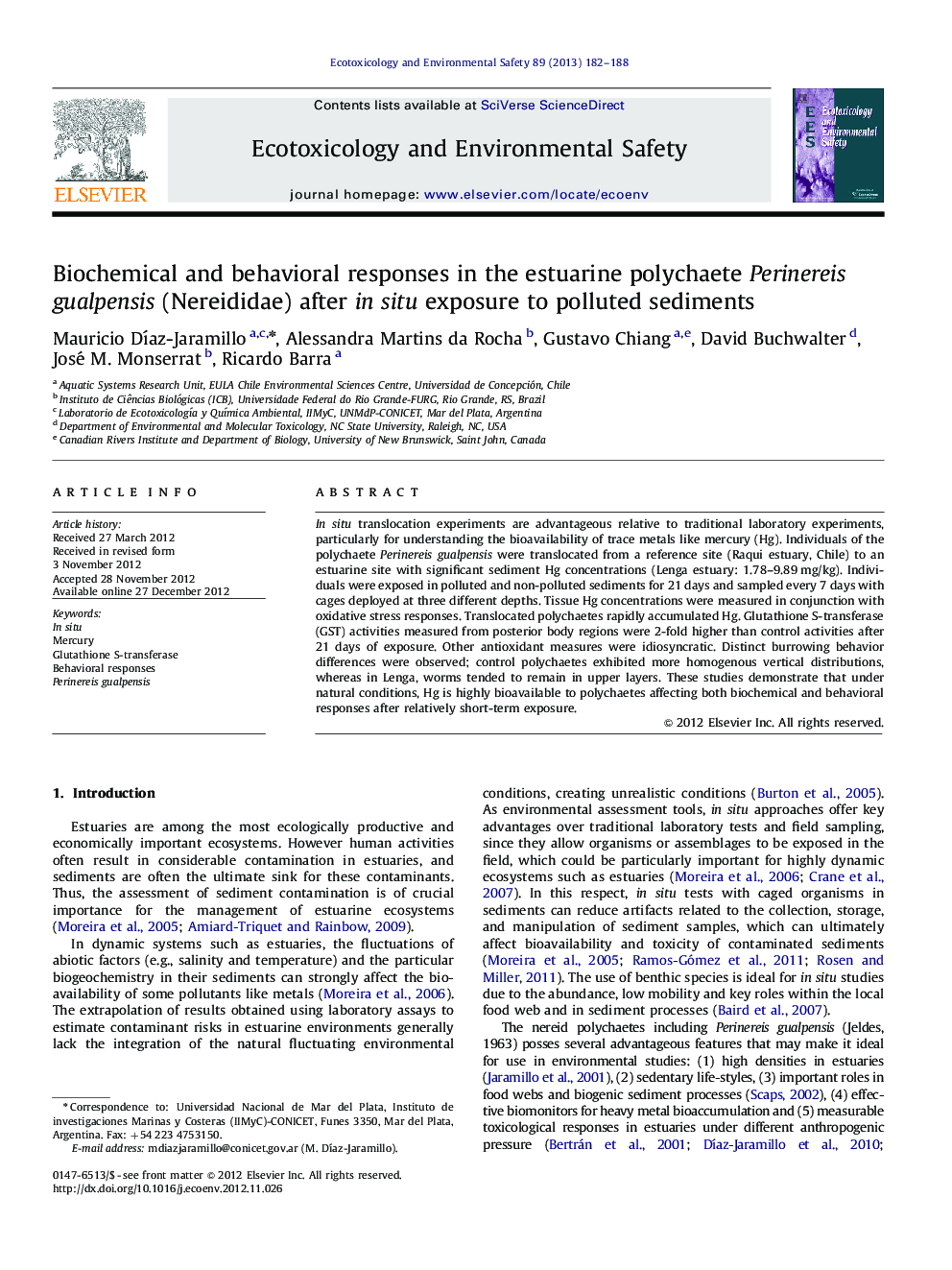| Article ID | Journal | Published Year | Pages | File Type |
|---|---|---|---|---|
| 4420600 | Ecotoxicology and Environmental Safety | 2013 | 7 Pages |
In situ translocation experiments are advantageous relative to traditional laboratory experiments, particularly for understanding the bioavailability of trace metals like mercury (Hg). Individuals of the polychaete Perinereis gualpensis were translocated from a reference site (Raqui estuary, Chile) to an estuarine site with significant sediment Hg concentrations (Lenga estuary: 1.78–9.89 mg/kg). Individuals were exposed in polluted and non-polluted sediments for 21 days and sampled every 7 days with cages deployed at three different depths. Tissue Hg concentrations were measured in conjunction with oxidative stress responses. Translocated polychaetes rapidly accumulated Hg. Glutathione S-transferase (GST) activities measured from posterior body regions were 2-fold higher than control activities after 21 days of exposure. Other antioxidant measures were idiosyncratic. Distinct burrowing behavior differences were observed; control polychaetes exhibited more homogenous vertical distributions, whereas in Lenga, worms tended to remain in upper layers. These studies demonstrate that under natural conditions, Hg is highly bioavailable to polychaetes affecting both biochemical and behavioral responses after relatively short-term exposure.
► Lenga estuary presented high Hg levels in their sediments. ► Perinereis gualpensis were translocated from a reference site to Lenga. ► Translocated polychaetes rapidly accumulated Hg. ► GST activities were significant higher after 21 days of exposure. ► Distinct burrowing behavior was observed in worms exposed to Hg sediments.
